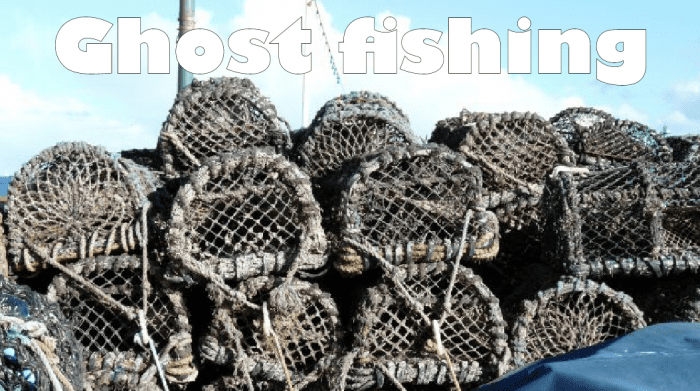Suffolk CCE works to remove more ghost-fishing gear from LI Sound

By Aidan Johnson
Potentially over a million abandoned lobster pots and fishing gear lay on the Long Island Sound floor.
This gear has been left in the Sound for multiple decades, but its impact on marine life is still felt today. [See story, “Ghost fishing,” TBR News Media website, June 4].
While the pots may be old, some still function and can trap lobsters and other aquatic animals, often killing them due to no way to escape.
Some of the lobster pots, partially made of plastic, are beginning to break down, polluting the water and compounding the environmental and ecological risks posed to marine life.
To stop this maritime mess, the Cornell Cooperative Extension of Suffolk County is getting to work. CCE first got involved with ghost fishing after the issue was raised with them by their commercial fishing partners in 2010.
“They had let us know that after the lobster industry crashed in about 1999, they were encountering a lot of derelict lobster pots during their normal operations and that they knew where some of these were,” said Scott Curatolo-Wagemann, senior educator at CCE Suffolk in Riverhead.
“We were able to put together a grant proposal, working with the commercial fishing industry — they had knowledge of where these traps were — to work with the New York State Department of Environmental Conservation to work out a letter that would allow us to do this work,” he added.
Since New York State law prohibits anybody except the owner of a lobster trap from removing it, CCE Suffolk pays fishermen a charter fee to remove the pots.‘Right now, we’ve been doing this all on the local fishermen’s knowledge.’ — Scott Curatolo-Wagemann
According to a statement updated in March by CCE Suffolk, 19,000 derelict traps have already been removed from the New York waters of the Long Island Sound, equaling an estimated weight of 950,000 pounds.
While there are many more derelict traps, CCE Suffolk is still determining precisely how much longer these efforts will take.
“Right now, we’ve been doing this all on the local fishermen’s knowledge,” Curatolo-Wagemann said. “We are trying to expand it. We’ve applied for some funds to start using side-scan sonar to map out areas that may have high concentrations of traps so that we can kind of [make] a coordinated effort to remove traps,” adding that efforts are underway “to get an estimated amount that may still be out there.”
State Assemblyman Fred Thiele (D-Sag Harbor) is working on drafting legislation allowing the state to remove the ghost gear after a designated period, but declined to comment for this updated story.






